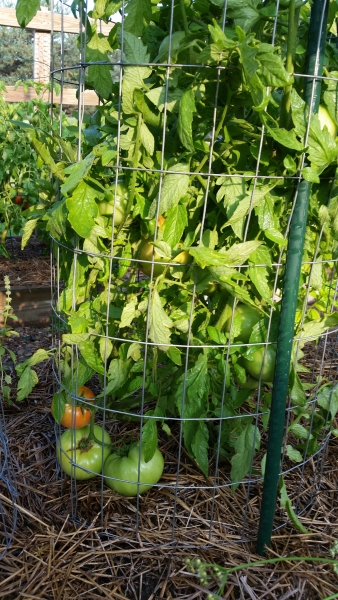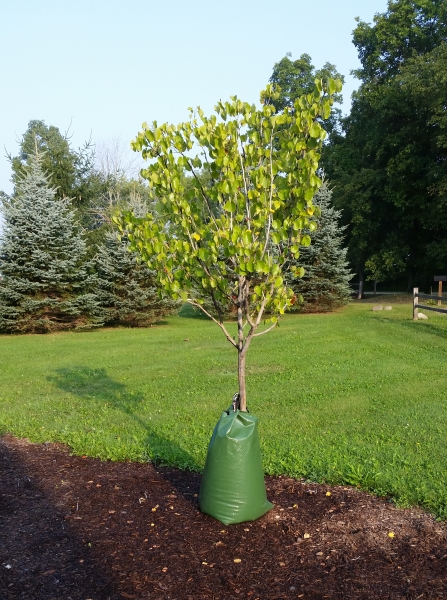September Gardening Advice for Manchester - 2015
by Jennifer Fairfield
Editor’s Note: Manchester resident, Jennifer Fairfield, owns and operates the Garden Mill in Chelsea, serves on the Manchester Community Garden Committee, and volunteers with the school gardens at Klager and the MECC.
El Nino could bring us a nicer winter than the last two, at least according to the national forecasters. However, the Farmers Almanac says we are in for another cold and snowy winter! Who to believe?
Whoever is right, September is usually when many of us start to think about preparing our yards and gardens for winter, even if the current temperatures are more like summer (I’m not complaining – it means continued great stuff from the garden!).
In the vegetable garden:
- We have had quite a dry spell around here since late June, so be sure to keep your garden watered whenever we aren’t getting at least an inch of rain.
- If your tomato plants are still putting out new flowers, it’s time to pinch them off. Flowers that are forming now are not going to have time to mature before we get our first frosts, and leaving them on means that your plants are spending unnecessary energy on growing those, when they really should be using all their energy to mature and ripen the fruit that is already there. I have even taken off all of the really small fruits on my plants, since they aren’t likely to get very big, and my plants have lots of large fruit already that I am (not so patiently) waiting to ripen.
- Pull any plants that have finished producing and compost them. Consider replacing them with late plantings of baby leaf lettuces, radishes, or spinach. You can even put in kale at this late date, as kale is pretty hardy and can handle some frost. Keep in mind that spinach doesn’t germinate as well when the temperature is high, so be sure to cover the ground with some mulch and water frequently to help keep the soil temp down. Do not compost tomato plants or really any plants showing signs of disease, as composting is not guaranteed to kill many garden diseases.
- Keep harvesting your pole beans, summer squash and cucumbers so that they will keep producing while we still have warm days.
- Continue to spray your tomatoes, peppers, squash, and cucumbers with fungicide. As the weather cools down and we get rain and even heavy morning dew, conditions are really good for disease. Regular spraying of fungicide will help slow down the progression of disease and extend your harvest. I am very happy that I have been vigilant in my spraying this year because it has helped me get a really great tomato crop, which I didn’t have the last two years, because I didn’t do as good a job of keeping up with the fungicide those years.

- If you have basil in your garden, and you are seeing some black spots on the leaves, don’t despair – the low temperatures we had for a few nights last week are most likely to blame. Basil doesn’t like temps below 50 degrees, and it got down to 47 at my house at least one night. Simply cut or pluck off those leaves – the rest of the plant should be fine. As the season winds down though, keep some row covers or insulation handy to cover up your basil when the nighttime temperatures are expected to get below 50. The N-Sulate product we have at the store can keep your plants as much as 6 to 8 degrees warmer than the air temperature. I like them because they are lightweight enough that I don’t have to worry about crushing my plants, as heavier things such as sheets would do. The way any cover works is to capture the ground heat and keep it close to your plants. So whatever you use, to really get the best effect, cover the plants before it cools down too much. It also helps to secure the covers to the ground so that the wind doesn’t blow them off. I also use the N-Sulate covers in my garden to help prolong my harvest of many things as frost starts to threaten towards the end of the month.
Flowers, Trees & Shrubs:
- If your annual flowers are starting to fade, pull them and replace them with mums, asters, or pansies for great fall color. We will have all of these in the store, beginning this week.
- If your container plants are still going strong at the end of the month, move them under a porch or other cover at night if frost is predicted.
- Tender summer-blooming bulbs, such as begonias, dahlias, and gladiolas, should be dug up after their foliage has died back, cleaned, dried and stored in a cool, dark, dry place for the winter. Cover them with peat or straw (I have one customer who uses packing peanuts) to keep them dry and let air circulate around them.
- Fall-planted bulbs that bloom in spring, such as daffodils, tulips, alliums, and crocus can be planted around the end of the month or in early October. The ideal time to plant them is after we’ve had a few light frosts, but before the ground is frozen. Adding bonemeal at the time of planting can help encourage root growth. Bulbs will start arriving in the store in the next couple of weeks, depending on temperatures. If it’s still really warm, I may delay getting them in until it cools down a bit.
- Divide perennials this month. Plants that have outgrown their space or are starting to fade in the center are prime candidates for digging up and moving or dividing. If you end up with plants you don’t have space for, give them away to friends, or donate them (the Chelsea Area Garden Club is always happy to have donated plants for their plant sale in May).
- September is also a great time to plant new perennials, trees and shrubs. Many garden centers have sales at this time of year, so take advantage of them, but do so early so that the plants have time to get their roots established before cold weather sets in.
- Whatever you plant, be sure to water it thoroughly from the time you plant up until the ground freezes. We have had a number of customers come in to buy Tree Gators for trees that they planted or had planted this year. Because it’s been so dry, many newly planted trees and shrubs have suffered from not enough water to help them get established. Until they really get established, the roots are not very good at taking water up from the soil, so you really need to keep them watered. The great thing about the Tree Gators is that they let the water seep slowly into the ground around the roots so that the water doesn’t just run off – and you don’t have to stand there hold a hose for an hour! I put in two new Rosebuds this summer, and the only thing keeping them alive right now is those green bags!
- Be sure to clean weeds out of your flower beds before they go to seed so as not to end up with even more weeds next spring!
- If you put house plants outside for the summer, treat them with a pesticide meant for indoor plants before bringing them back inside.
Lawn:
As I think I’ve mentioned more than once, I don’t have a really fabulous lawn, mostly because I don’t spend any time on it. But I do have a couple of spots this year that I need to tend to because of some construction and other work I’ve been doing which have left some bare patches, and September is the time to do it.
- If you have bare patches in an existing lawn, over-seeding is the best way to fix them. Start by raking away any dead grass and roots, and then sprinkle some seed in. You can also add a little bit of top soil to give the seed a better chance to take hold. Don’t forget to cover the area lightly with a little mulch (straw works well) to keep moisture in. Keep the area well-watered. Once the grass starts to emerge, remove the mulch so as not to smother the new grass.
- If, like me, you have new areas that you want to turn into lawn, rake the soil up to loosen it. Spread seed, following the recommendations on the bag for how much to use for the area you need to cover.
- Consider de-thatching your lawn. This is something that most people don’t do, and maybe should, if they want a really good looking lawn. According to the MSU extension, “Thatch is the accumulation of dead and decomposing turf stems, leaves and roots intermixed with live plant roots.” Leaving clippings on your lawn is good for it, and does not have anything to do with thatch, though could be a contributing factor if you are cutting off too much grass at a time. MSU has a good article on how to de-thatch your lawn.
- Fertilize your lawn this month to encourage good root growth before winter.
- Continue to mow at a height of about 3.5 to 4 inches. Any shorter and your lawn won’t have the insulation it needs against the cold this winter. Much longer isn’t any better though, as it promotes something called snow mold disease, which will leave ugly bare patches in your lawn next spring.
- Rake up the leaves that fall and use them as mulch or add them to your compost pile. Leaves left lying on the lawn can also promote snow mold disease. Run over them with a mower to chop them up, as whole leaves tend to mat down and can suffocate the plants you are mulching or your compost.
Birds:
- Start feeding the birds again, if you stopped for the summer. Migrating birds will appreciate the additional food as they make their way to their winter habitat, and those who stick around will be able to build up fat reserves against the cold days and nights to come.
- Clean out bird houses that were used for nesting this summer. Some of your birds will use them for keeping warm at night during the winter.
- Keep birdbaths full – the birds are suffering from the lack of water as much as our plants are!
- Continue to fill your hummingbird feeders. Did you know that most of the Ruby-throated hummers who call Michigan home for the summer fly all the way down to Central America for the winter, and they cross the Gulf of Mexico to get there – they don’t usually fly along the coast?! That means that they are flying non-stop for hundreds of miles! That boggles my mind, mostly because of how small they are. I can’t imagine them having enough energy to make that trip, but apparently, they do. You can help them with all that flying by making sure they have something to eat as they set out on their journey. The sugar-water you put in their feeders helps them build up body fat, which they will depend on for that long flight. And since some of the birds actually spend their summers even farther north than SE Michigan, leaving your feeders out longer into the fall can help the ones who are migrating through here later. So leave them out well into October – just be sure to bring the feeders in at night if we are getting freezing temps.










You must be logged in to post a comment Login